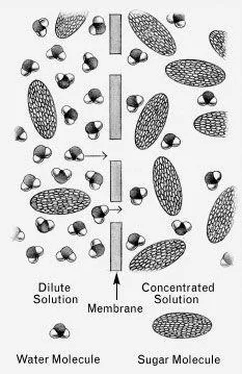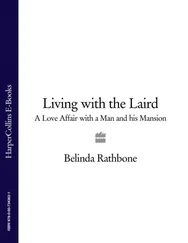Marlene Parrish - What Einstein Told His Cook 2
Здесь есть возможность читать онлайн «Marlene Parrish - What Einstein Told His Cook 2» весь текст электронной книги совершенно бесплатно (целиком полную версию без сокращений). В некоторых случаях можно слушать аудио, скачать через торрент в формате fb2 и присутствует краткое содержание. Год выпуска: 0101, Издательство: W. W. Norton & Company, Жанр: Кулинария, на английском языке. Описание произведения, (предисловие) а так же отзывы посетителей доступны на портале библиотеки ЛибКат.
- Название:What Einstein Told His Cook 2
- Автор:
- Издательство:W. W. Norton & Company
- Жанр:
- Год:0101
- ISBN:нет данных
- Рейтинг книги:4 / 5. Голосов: 1
-
Избранное:Добавить в избранное
- Отзывы:
-
Ваша оценка:
- 80
- 1
- 2
- 3
- 4
- 5
What Einstein Told His Cook 2: краткое содержание, описание и аннотация
Предлагаем к чтению аннотацию, описание, краткое содержание или предисловие (зависит от того, что написал сам автор книги «What Einstein Told His Cook 2»). Если вы не нашли необходимую информацию о книге — напишите в комментариях, мы постараемся отыскать её.
What Einstein Told His Cook 2 — читать онлайн бесплатно полную книгу (весь текст) целиком
Ниже представлен текст книги, разбитый по страницам. Система сохранения места последней прочитанной страницы, позволяет с удобством читать онлайн бесплатно книгу «What Einstein Told His Cook 2», без необходимости каждый раз заново искать на чём Вы остановились. Поставьте закладку, и сможете в любой момент перейти на страницу, на которой закончили чтение.
Интервал:
Закладка:
Drinking is the mechanism by which we “eat” liquids, as opposed to solids and semisolids. We take solid food into our mouths by biting it off or shoveling it in, if you’ll pardon the metaphor. On the other hand, we take liquids into our mouths by sucking—even from a glass. (Think about it.) Before solid food can be swallowed, it must be chewed and mixed with saliva to make it supple enough to slide “down the hatch.” Liquids, however, can go directly down the hatch without any pretreatment.
When we talk about drinks, we are talking primarily about water. All beverages that we consume are about 90 percent water, the universal liquid on Earth without which we cannot live.
Coke and Pepsi are 89 percent water by weight; milk and orange juice are 88 percent water; coffee and tea, more than 99 percent. Wines average around 87 percent, while 80-proof whiskey, because of its significant content of another liquid, ethyl alcohol, comes in at only about 67 percent water.
How does our physiology handle the ingestion of all these liquids?
Just behind the mouth in a region called the pharynx lie the openings of two tubes: the trachea for breathing and the esophagus, or gullet, for eating and drinking. Thus, swallowing, whether liquids or semisolids, can be a bit of a risky business lest they go down “the wrong pipe” and choke off our air supply. Nature has therefore provided us with a complex series of muscular reflexes, with valves or sphincters that open and close to propel our food and drink down the esophagus to the stomach, rather than into the trachea or up into the nasal cavity (except when children burst into laughter while drinking milk).
Having thus belabored the obvious for the benefit of any visiting aliens, let us begin our shared literary repast with a variety of “somethings to drink.”
NICE ICE
Someone in my household (I have my suspicions) put a half-empty plastic bottle of cola in the freezing compartment of the refrigerator. When I discovered it a couple of days later, I was surprised to see that it had frozen into lacy crystals of pure white ice against a background of unfrozen brown. Why wasn’t the frozen cola brown, like the original liquid?
Let’s follow the fate of the soda from the time that rascal put it in the freezer, probably with the misguided intention of keeping it nice and fizzy till the next attack of thirst.
All liquids turn into solids—that is, they freeze—when they get cold enough. Pure water freezes at 32°F (0°C), but your soda isn’t pure water. Far from it. It contains flavorings, phosphoric acid, coloring, and sweeteners—sugar, corn syrup, or artificial sweeteners.
Still, the vast majority of the molecules in the bottle are good old H 2O. And when they are cold enough to freeze, they join together into a rigid network—a geometrically regular, three-dimensional arrangement of H 2O molecules that we call ice. The molecules in ice are in fact so rigidly fixed in their places that they are hard to break apart from one another. Ice is therefore (surprise!) a much harder substance than liquid water.
With all those other non-H 2O molecules cluttering up the place, however, the water molecules have a harder time finding one another so they can join together and form ice crystals. So the soda had to be cooled down past its normal 32-degree temperature before it was able to freeze.
But freeze it eventually did. The water molecules eventually slowed down enough to settle comfortably into their places. As they did, they were able to elbow aside all those foreign molecules, so the ice they formed was relatively pure. That’s the white ice you saw. All the “brown molecules” had been left behind.
Ice floes in the Arctic are made of relatively salt-free ice for the same reason, in spite of the fact that they were frozen from salty seawater.
MIST-TEA
When I make tea, it’s always beautifully clear when freshly made. But when refrigerated, it often turns cloudy. What causes that, and can I prevent it from happening?
Tea leaves contain tannins, a loose collection of chemicals that give tea much of its flavor and body, and especially that astringent, puckering effect in the mouth. They dissolve in water to form a clear solution, as long as the water isn’t too cold or slightly alkaline. *Your cloudiness occurs when some of the tannins in the hot tea fall out of solution ( precipitate ) as tiny solid particles when the tea is cooled. Cloudiness can also form when certain tannins react with the caffeine in the tea.
Tannins are present to some extent in most plant materials but are particularly abundant in oak galls (abnormal growths on oak trees); certain barks, woods, and roots; and nut shells.
All tannins are soluble in water, but how much of them can dissolve in a given amount of water (their solubilities ) depends on the temperature of the water and upon its acidity or alkalinity. When hot water is used to make strong tea (the usual first step in making iced tea), it extracts most of the tannins from the leaves. Then, when the solution is cooled down with ice cubes, all those tannins cannot stay dissolved, and they fall back out as fine, suspended solid particles that give the tea a cloudy appearance.
Tannins are more soluble in acidic solutions, so that when an acid such as lemon juice is added to tea, any solid particles of tannin will dissolve and the cloudiness will clear up.
Also, if the tea is initially brewed with hard water—that is, with water containing dissolved calcium or magnesium salts—these minerals can react with the tannins to form relatively insoluble complex chemicals that show up as flotsam and jetsam.
If your water is hard, then, try adding a little lemon juice to clear up any cloudiness. Or switch to a different tea, because some teas, such as Assam and Darjeeling, are richer in tannins and thus more prone to cloudiness than others, such as Ceylon.
Sidebar Science: Well, tan my hide!
THE WORDS tannin and tannic acid are often used interchangeably, but not by chemists and other finicky types. Tannic acid is a specific chemical compound, a high-molecular-weight penta-m-digalloyl-glucose, a.k.a. gallotannic acid, with the formula C 76H 52O 46. On the other hand, the word tannins refers to a whole class of complex plant chemicals that just happens to include tannic acid. They are generically called tannins, not because of any particular chemical similarity (although they are mostly what are known as polyphenols), but because they have been used since prehistoric times for tanning hides: converting raw animal skins into leather in order to improve their durability and resistance to heat, water, bacteria, and fungi.
Tannin polyphenols turn hides into leather by reacting with proteins in the skins to form insoluble adhesive-like substances that bind the protein fibers tightly together. In this tight, dry form, the hide is much stronger and more durable than the raw skin.
Tanning your own hide is a completely different state of affairs. Soaking your body in strong tea or extract of boiled oak galls is not recommended, but exposure to sunlight will induce your skin to produce the dark pigment melanin. So-called self-tanning lotions (they don’t tan themselves; they tan you) usually contain dihydroxyacetone, or DHA, a colorless chemical that reacts with amino acids in the outermost cells of the epidermis (the stratum corneum ) to produce a variety of dark reaction products.
My Chai
Chai (rhymes with “pie”) is the word for tea in many parts of Asia, where the tea plant originated. Tea’s use spread over Asia by land and ultimately conquered Europe (especially England) by sea.
Читать дальшеИнтервал:
Закладка:
Похожие книги на «What Einstein Told His Cook 2»
Представляем Вашему вниманию похожие книги на «What Einstein Told His Cook 2» списком для выбора. Мы отобрали схожую по названию и смыслу литературу в надежде предоставить читателям больше вариантов отыскать новые, интересные, ещё непрочитанные произведения.
Обсуждение, отзывы о книге «What Einstein Told His Cook 2» и просто собственные мнения читателей. Оставьте ваши комментарии, напишите, что Вы думаете о произведении, его смысле или главных героях. Укажите что конкретно понравилось, а что нет, и почему Вы так считаете.












